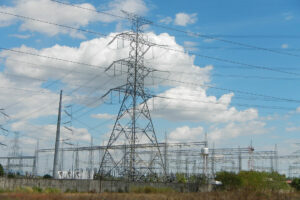THE Luzon power grid was placed under yellow alert on Tuesday after the sudden plant outage of San Lorenzo power plant in Batangas City.
In an advisory, the National Grid Corp. of the Philippines said the yellow alert was raised over Luzon between 1 p.m. and 4 p.m., when peak demand was estimated at 12,222 megawatts (MW), against available capacity of 12,705 MW.
San Lorenzo is a combined-cycle plant which can run on natural gas. It has a capacity of 500 MW.
Yellow alerts are declared when supply available to the grid falls below a designated safety threshold. If the supply-demand balance deteriorates further, a red alert is declared, signifying the grid operator’s intent to ration power via rolling brownouts.
The Department of Energy (DoE) said the tripping of San Lorenzo eroded the scheduled contingency reserve to a level below highest-capacity unit that is online.
“As of this report, the DoE is still coordinating with San Lorenzo and other stakeholders for the cause of the tripping,” DoE said.
Separately, Manila Electric Co. (Meralco) said an automatic load dropping incident occurred which led to the removal of about 396 megawatts (MW) from Meralco’s available supply.
The power utility said that about half a million of its customers in parts of Metro Manila, Bulacan, Cavite, Laguna, Rizal, and Quezon experienced brief power interruptions that lasted for eight minutes.
Meralco also said that it immediately activated the interruptible load program (ILP) following the grid operator’s announcement of insufficient supply.
ILP participants are large power users that have their own generating facilities. These entities stop drawing power from the grid during times of unreliable supply, tapping their own power plants for their needs and reducing the overall load on the grid.
“We continue to monitor the situation and are ready to implement contingency measures as needed,” Meralco said.
The DoE estimated power demand on Luzon last week at 12,550 MW, the highest level so far for the year. The previous high was 12,417 MW in May.
The government weather service has declared El Niño to be active, likely bringing warmer temperatures that will raise power demand.
The DoE projects four yellow alerts in the July-August period, with Luzon grid reserves expected to thin due to El Niño. — Ashley Erika O. Jose

